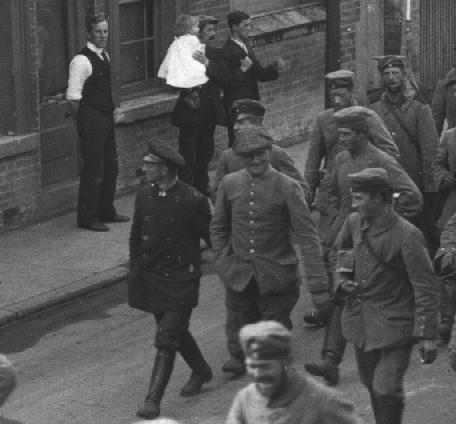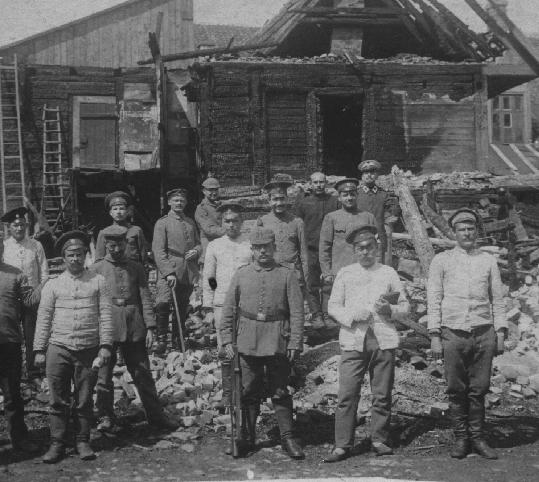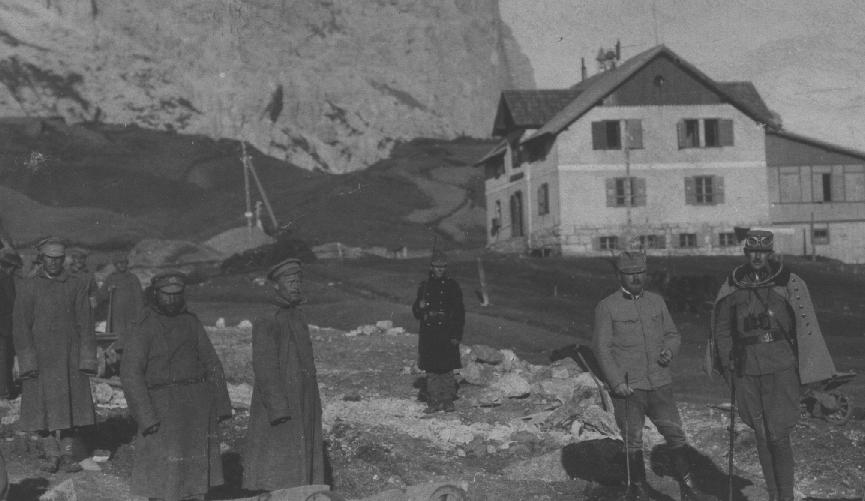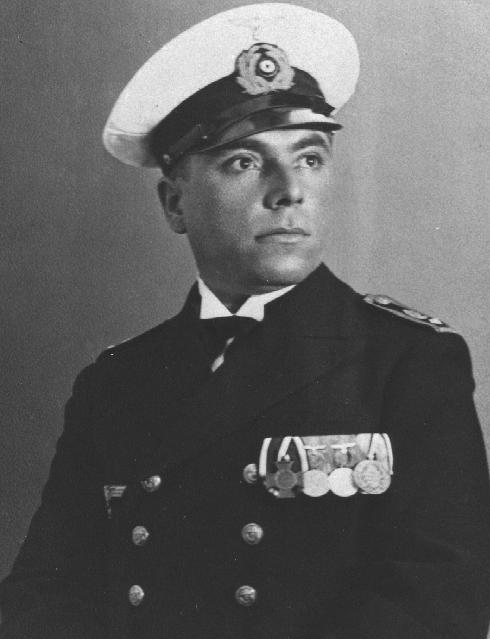-
Posts
7,153 -
Joined
-
Last visited
-
Days Won
5
Content Type
Profiles
Forums
Blogs
Gallery
Events
Store
Posts posted by Ulsterman
-
-
David:
Do you perchance know Ed Hayes? He is finishing up a massive book on Indian awards.
These are great bars.
Ed also has illustrated the OMSA web site with many Indian awards.
0 -
-
quality and beauty of awards and complexity of research required to study this area.
0 -
Well, I tried to post a button-hole snap last night nad it said : 'image too big, 29mb left'.
I can not imagine how somebody won a silver St. Henrys' medal, lived to 1934/35 to get an HKx and did not manage to get an EK2. Yet the bar is out there and it is presumably a real one.
soon, soon I shall have more space.... wub.gif
0 -
I have a large number of photos where the EK2 is worn in the button hole.
99.9% of these are war time and "look at my new medal"/promotion portraits. But that other .1% shows officers wearing the EK2 in the button hole while sporting significant (other states) combat orders. To me then, these indicate an odd 'highest medal in button hole" fashion statement in early Weimar.
In addition, there seem to be a small number of medal bars which are incomprehensible without a strong suspicion that an EK2/ribbon dangled from some sort of uniform button-hole. Notibly, a St. Henrys' medal/HKx furled ribbon pair which is undoubtedly original.
The "best medal" fashion statement as illustrated above seems to have continued into the early TR. I'd illustrate all the above statements happliy-but have a measly 29 mb left in my allowance-which means I could scan a bit of dental floss on my scanner.
0 -
Is it a 'secret"? Pardon the pun.
0 -
If there had been only Orders and not the medals, he could have had up to eleven years total military time by 1939, when awards of the Wehrmacht long service decorations stopped "for the duration" and so only had a 4. Many an overaged Hauptmann and even some retread Majors only had a 4.
But since he got the St Henry and Reuss medals, only for enlisted men, he had to have been noncommissioned in 1914 at least. I haven't found a match with a regular Leutnant from JB 13, but he could have been a One Year Volunteer who joined 1912/13, or a War Volunteer from 1914, and so commissioned about 1916 in the resrerves OR regulars. Depending on when he left the army (1919 or 1920) that would have effected his service time reckoning, 1912/14 to 1919/20 being only 5 years at the low end or 7 years maximum. Rejoining (E) in 1935 as most did would have added 4 more years to when the long service awards stopped, so 9 to 11 total actual years in uniform when WW2 began.
Many WW1 Leutnants der Reserve were called back as 1930s Hauptleute (E), since they had the same rushed "professional" training as young regulars. This officer proably made major (E) in 1940 or 1941, when the (E) designation was finally dropped, and as a combat officer would then have gone into the "T" pool, ending up as an Oberstleutnant if he survived.
I thought World War One service years counted as double time? So as a War Volunteer who was out in early 1919 and brought back in 1936 he could avoid the 12 year medal.
0 -
Interesting that he has only one LS award no? Perhaps a war duration volunteer from Gymnasium/University?
0 -
Wow-sounds like Bauer and jordan were lucky to survive at all. Yikes.
0 -
Thanks! Nice huh? I especially like the Royal monogram on the right.
It's a mystery.
0 -
Nice. Do you have more information about who got what class of award?
When did you start collecting Japanese stuff?
0 -
Interesting award book. i wonder what the number sequences mean? Is the middle # the year?
0 -
In France, somewhere @1917:Ooops wrong thread...

 0
0 -
What compensation claims?
The best book I read on the Mau Mau was Frank Kitson's "Bunch of Five". He later was GOC in Belfast in @1971-72 and a great bloke.
A guy at Cambridge-Randall Heather, a Canadian, wrote a cracker MpHil. Thesis on the Mau Mau in the late 1980s. They'll send you a copy if you write the University Library. They talked about it for years.
Also, there was an oral history of the Mau Mau done in the 1980s as well as t"The Savage Wars Of Peace" series on BBC radio4 (and book). A good general overview is "The Trumpets Departs"-another BBc production.
0 -
Here's a medal I picked up several months ago. From the old Kingdom of Burundi. One can clearly see the Belgian influence here and it's surprisingly well made-die cast, solid. However, information of medals from Burundi is scarce. I think this is either a merit medal (like the British MBE and ISM) or the low end medal of the Order of Rwagasore. Does anybody know what it is?
Hmmm...just tried to upload the photo but it says it's too large. I'll just have to wait for my 51st post.
flame
0 -
Theres' a lot of us here. Now if we can just get Ed Hayes back too.
0 -
Were the Provies ever going to lose?
Well, they certainly weren't going to win a military victory. But they eventually realized thet (@ 1987/89)-hence the "bullet and ballot box"/ Long War strategy where violence was used to augment elections.
0 -
I think the military phase is over for at least a generation.
But I doubt they'll ever hand over all their weapons; even they've figured out that they can't fight a full fledged terror campaign in a world post-9/11.
Also, I suspect while they hold onto their guns to "save face", there's also a blunt tactical purpose in play as well. An armed enemy is treated much more seriously than an unarmed one.
Lastly, while the UDA/UFF fell apart back into their gangster elements, don't understimate them. If the balloon ever does go up again-watch out. The "Real IRA" downed weapons after the 3rd UDA Battalion made it very clear that Ms. Sands' kids were considered legitimate targets (complete with photos of them on their way to school). They also have been very efficient about killing their IRA targets.
If the UDA chose to expand their war to include family members and the Provos and others sit back and watch, the Real IRA would last all of a weekend.
There's a history in Ireland of Armed Militants becoming politicians and then-a generation later-being outflanked by the more militant (e.g. violent) group. I suspect that Sinn Fein are aware of that (certasinly Danny Morrison was and said so at the Ard Dheis in 1996) and thats' another reason AK47s still sit in bunkers near Killeybegs.
Anyway, the above isn't meant as "politics" but tactical assessment.
0 -
Interesting. I wonder which part of the split thinks it achieved its goal in the end.
How 's Newtonards by the way?
It's ok. It's getting more "modern" every day:crime, crowding etc. etc. .
The Provos clearly won and they think so too. Adams once said as much to me 15 years ago.
They sit in the seats of power after all. Not bad for an ex-sailor and a barman.
0 -
and another:

 0
0 -
Here's mine:

 0
0 -
I heard that Spinks has been asked to design an Afghani campaign medal for the "Taliban campaign".
Also, isn't htere a UN medal for service in Afghanastan now?
0 -
RE: #6, I thought that the Defense Medal could only be awarded for service within the UK proper. I supposed that the India Service Medal replaced the Defense medal.
Am I wrong?
0 -
The "Stickie"/ provo split also had a lot to do with age and Marxist ideology. The older Sticks were all hard core leftists. The Provos were/are socialists, but most didn't believe in "fostering class revolution and 'class interest would lead to uniting with the Prods" . The Provos just wanted to fight-hit back-and they did.
I remember one guy telling me that in 1971 just after the split the average provo was 19 years old and the average Stick was 45+.
0





Let's see some 2X & 3X medal bars
in Germany: Imperial: The Orders, Decorations and Medals of The Imperial German States
Posted
Gosh-that last St. Henry's bar is stunning. Pity the gold medal is not still in situ.
Here's a fiver: